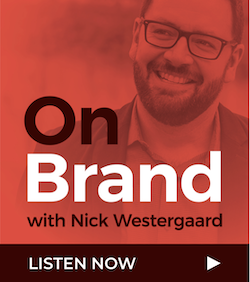On a recent family vacation, we took our kids to Legoland in Schaumburg, Illinois. It was a fun experience in more ways than one. For anyone who’s ever played with the colorful blocks or seen the recent movie, you know that Legos are … well … awesome. However, Legoland might be different than you expect.
When a children’s brand is large enough to be blown up to theme-park size, you imagine favorite characters walking around signing autographs and posing for pictures as you wait in line for amusement park rides thinly disguised as vignettes from the show.
That’s what I was expecting at Legoland and I was wrong. Dead wrong.
“We’re in the Experience Business Now”
More than rides that happen to you, Lego creates an immersive experience with factory tours, master builder workshops, and opportunities to build and play. It’s an experience that’s consistent with all aspects of the Lego brand from toys to parks to movies. You don’t watch Legos. You play with Legos. You build with Legos. It’s all a part of the experience that is the Lego brand.
It’s more than just the Lego brand, though. It should be your brand too. The concept of immersive experience is more and more prevalent in marketing conversations at organizations small and large and at the best and brightest agencies and creative firms in the land.
“We woke up and all of a sudden we weren’t in the communications business anymore,” says Siegel+Gale Co-CEO and Chief Strategy Officer David B. Srere on a recent episode of the On Brand podcast. “We’re in the experience business now.” Disrupted by today’s digital landscape, we can’t just talk at our customers. We have to create experiences with them.
OK. Experiences are good but what does this really mean? And how can we get our arms around it if we aren’t working for an innovative agency or a playful brand like Lego?
How to Create Your Brand Experience
First, you have to get past the silos. Too many organizations are slow to adapt to experience-based marketing because they’ve been burdened with an infrastructure designed to control the message. Today, not only is message-control as elusive as ever but these silos keep other important parties out of your marketing that should be closer to it, such as your front-line team members and your customers. Ben and Jerry’s #CaptureEuphoria experience wouldn’t have been possible without their customers.
To build on this idea, marketers need to get out of the marketing department and onto the front lines. When you’re closer to your customers, you can start to design brand-based experiences around their needs and how they interact with your products and services. Channeling your customers and creating experiences for them is much harder when you hide in your marketing cave. Ask them what they value most about what you do and how you could make it better. Ask them what you could do for them instead of what you want to communicate at them.
When you create immersive experiences you ultimately create a more social business. By the traditional definition of ’social,’ when you knock down silos and co-create you’re actually talking to more parties. But you’re also increasing the chances that these experiences will be shared via social media as well. When you create an experience around your brand it produces a visceral, emotional response that drives your audience to tell the world.
Simply put — brand experiences are more powerful than brand communications. What are you saying today? How could you create an experience instead?









